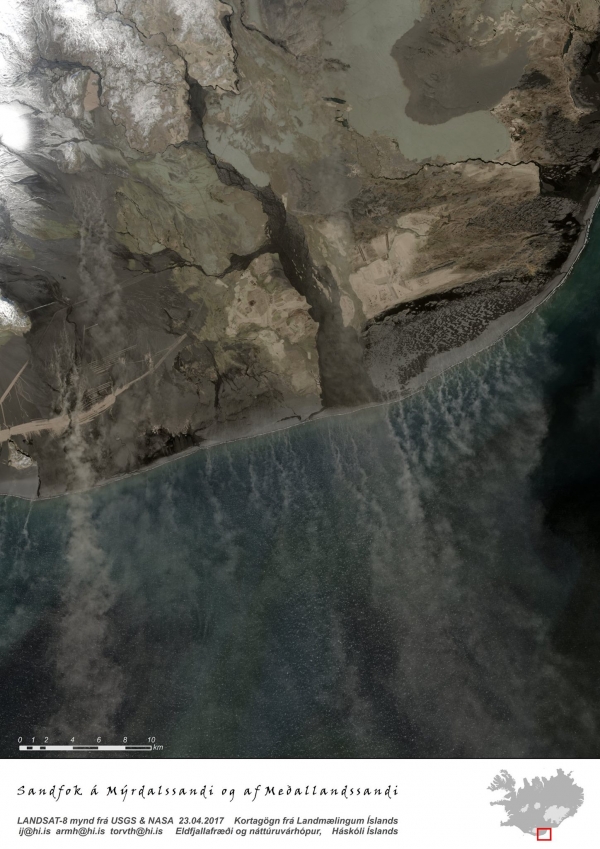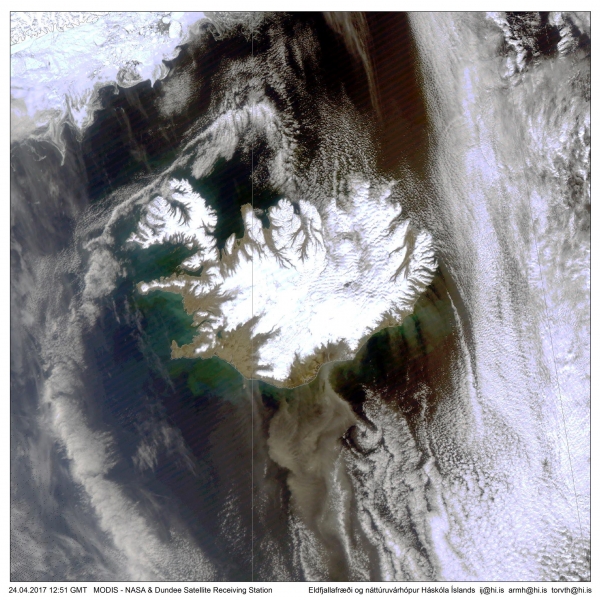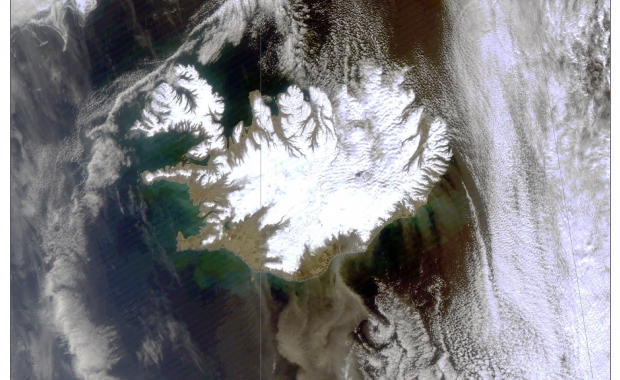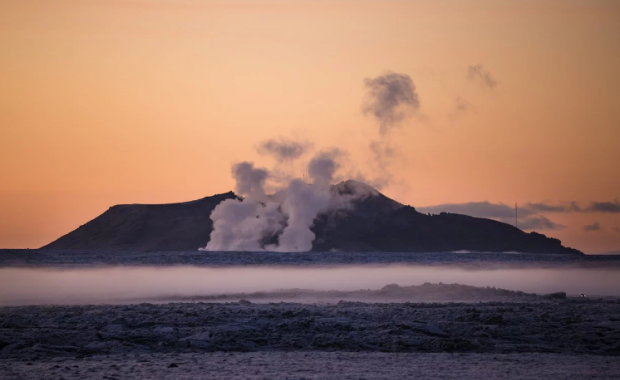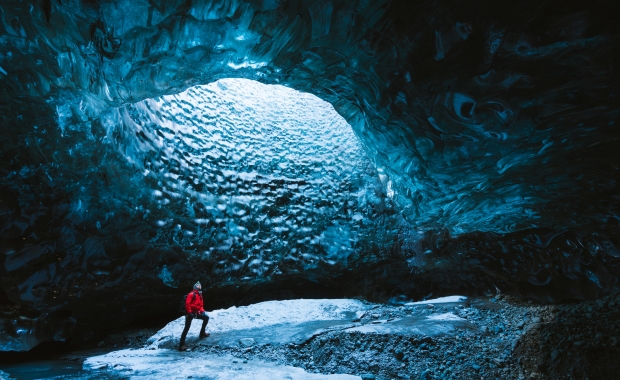During storms the beautiful black sand beaches of South Iceland can generate powerful dust storms. Travellers who are unfortunate enough to drive through these have discovered that the storms can strip the paint off their cars and destroy windshields and windows.
These storms also carry mineral rich dust out to the North Atlantic, providing nutrition for algae and marine life. In fact, Iceland is one of the major sources of dust in the Atlantic, playing a role in the North Atlantic similar to the role played by the Sahara desert at more southerly latitudes. The dust storms are usually most powerful in the spring.
Powerful winds last weekend and earlier this week created such dust plumes which can be seen from satellite photos taken on April 23 by a NASA meteorological satellite, processed by the Volcanology and Natural Hazard group, University of Iceland. The wind speeds during this storm were not particularly strong, only 12 m/s, with wind gusts reaching 17 m/s.


During storms the beautiful black sand beaches of South Iceland can generate powerful dust storms. Travellers who are unfortunate enough to drive through these have discovered that the storms can strip the paint off their cars and destroy windshields and windows.
These storms also carry mineral rich dust out to the North Atlantic, providing nutrition for algae and marine life. In fact, Iceland is one of the major sources of dust in the Atlantic, playing a role in the North Atlantic similar to the role played by the Sahara desert at more southerly latitudes. The dust storms are usually most powerful in the spring.
Powerful winds last weekend and earlier this week created such dust plumes which can be seen from satellite photos taken on April 23 by a NASA meteorological satellite, processed by the Volcanology and Natural Hazard group, University of Iceland. The wind speeds during this storm were not particularly strong, only 12 m/s, with wind gusts reaching 17 m/s.
